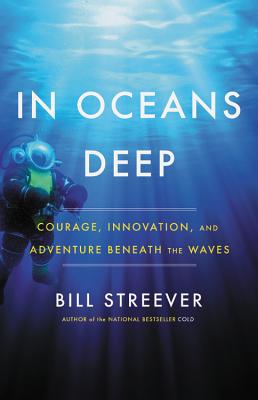IN OCEANS DEEP: Courage, Innovation, and Adventure Beneaththe Waves
By Bill Streever
Little, Brown, NY, 2019: 303pp.
This is a very good if somewhat episodic account of humanity’s descent beneath the sea by every means we’ve found: diving suits, free-diving, submarines, submersibles, habitats, and remotely operated vehicles (ROVs). Streever is well-qualified to write this book: he is not just a science writer, but a biologist and a diver whose resume includes SCUBA diving, saturation diving as a young oil field worker, and free diving, a new sport to him (he takes us along as he learns it).
There are fascinating facts and stories throughout this book, and some bits like the evolution from towed dredges to ROVs for exploration and the development of our understanding of “caisson disease” (the bends) stand out as especially well-explained. He recounts some of his interviews with significant personalities in marine exploration and laments that some, like James Cameron, were unreachable: writers rarely if ever include such misses, and to me as a writer it’s very interesting. Of particular note is his talk with Don Walsh, one of two men on the Trieste when it dove to the bottom of the Mariana Trench. I didn’t realize what a shoestring operation that was. (Walsh thinks the flatfish he reported, generally believed to be a sea cucumber, might still have been a fish.) Streever elicits a striking comment from Dr. Sylvia Earle, who said the barely-surviving Haitian fishermen Streever was with had choices other than catching too-small conchs and lobsters but he didn’t ask what those were. (To be fair, Steever managed only a short telephone conversation.) He’s fascinated by new technology, like the latest nuclear submarines and ROVs: he even buys a small ROV himself to explore its utility. I expected a bit more detail on hard-suit diving and at least a mention of liquid-breathing experiments.
Somehow, I didn’t like the book as a whole quite as much as I liked the parts. Maybe it needed just a bit more context on how the various segments of marine-exploration history affected the big picture of how we see and use the oceans. Also, while there are 21 pages of fascinating chapter notes, it’s very strange to find no bibliography.
Streever, who closes with a review of recent environmental developments, obviously loves the ocean, and he knows it better than most of us ever will. All quibbles aside, this book is a voyage worth taking.

1 comment:
Post a Comment